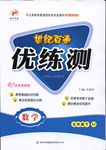题目内容
30. They appeared ____ me, so I had to explain to them.
A. misunderstanding B. misunderstood
C. to be misunderstood D. to have misunderstood
D

 世纪百通主体课堂小学课时同步达标系列答案
世纪百通主体课堂小学课时同步达标系列答案 世纪百通优练测系列答案
世纪百通优练测系列答案Sea turtles come in many different sizes, shapes and colors. The shell of each sea turtle species is different in length, color, shape and the arrangement of the scales(鳞片).
Sea turtles do not have teeth but use their jaws (下巴)to eat. Their sense of smell is excellent. Their eyesight underwater is good, but they have near-sighted eyes out of water. Their special bodies make them adapt to life at sea. However, sea turtles maintain(保持) close ties to land.
Female sea turtles have to go to the seaside to lay their eggs in the sand; therefore, all baby sea turtles begin their lives on land. Most research on sea turtles has been focused on female turtles nesting and the baby sea turtles in the nest, largely because they can be found most easily. After decades of studying sea turtles, much has been learned about. However, many mysteries(谜) still remain.
Researchers do not yet know how long baby turtles spend in the open sea, or exactly where they go. People believe they spend their earliest years floating in the sea, where they do little more than eat and grow. Once turtles reach dinner-plate size, they appear at feeding grounds in waters near the shore. They grow slowly and take between 15 and 50 years to grow old enough to bear baby sea turtles, depending on the species. There is no way to know the age of a sea turtle from its physical appearance. It is believed that some species can live for over 100 years.
【小题1】Which of the following statements is NOT true about sea turtles?
| A.They don’t use teeth to eat. |
| B.They have a good sense of smell. |
| C.Sea turtles are more adaptable to life at sea. |
| D.Different species have different shells. |
| A.good eyesight | B.bad eyes |
| C.excellent eyes | D.poor eyesight |
| A.Why do female turtles lay eggs on land? |
| B.Why can’t people tell how old a sea turtle is from its appearance? |
| C.Where do the baby turtles usually go? |
| D.Do sea turtles grow very fast? |
| A.Mysteries About Sea Turtles |
| B.Baby and Female Sea Turtles |
| C.The Growth of Different Sea Turtles |
| D.The Characteristics(特点) of Sea Turtles |
Read the following text and choose the most suitable heading from the list A-F for each paragraph. There is one extra heading which you do not need.?
|
A. The description of using amateur records to encourage the public. B. The description of old records kept by amateur naturalists. C. Concerns over amateur data for lacking objectivity and precision. D. The necessity of encouraging amateur collection. E. How people react to their involvement in data collection. F. The application of amateur records to phonology. |
1.______________
Tim Sparks slides a small leather-bound notebook out of an envelope. The book's yellowing pages contain beekeeping notes made between 1941 and 1969 by the late Walter Coates of Kilworth, Leicestershire. He adds it to his growing pile of local journals, birdwatchers' lists and gardening diaries. "We're uncovering about one major new record each month," he says, "I still get surprised." Around two centuries before Coates, Robert Marsham, a landowner from Norfolk in east of England, began recording the life cycles of plants and animals on his estate. Successive Marshams continued recording these notes for 211 years.
2._______________
Today, such records are being put to uses that their authors couldn't possibly have expected. These data sets, and others like them, are proving valuable to ecologists interested in the timing of biological events, or phonology. By combining the records with climate data, researchers can reveal how, for example, changes in temperature affect the arrival of spring, allowing ecologists to make improved predictions about the impact of climate change.
3._______________
But not all professionals are happy to use amateur data. "A lot of scientists won't touch them, they say they're too full of problems," says Root. Because different observers can have different ideas of what forms, for example, an open snowdrop. "The biggest concern with ad hoc (临时的) observations is how carefully and systematically they were taken,” says Mark Schwarts of the University of Wisconsin, Milwaukee, who studies the interactions between plants and climate. "We need to know pretty precisely what a person's been observing—if they just say ‘I noted when the leaves came out’, it might not be that useful.” Measuring the onset of autumn can be particularly problematic because deciding when leaves change color is a more subjective process than noting when they appear.
4._______________
Overall, most phrenologists arc positive about the contribution that amateurs can make. "They get the raw power of science: careful observation of the natural world," says Sagarin. Others suggest that the right statistics can iron out some of the problems with amateur data. Together with colleagues at Wageoingen University in the Netherlands, environmental scientist Arnold van Vliet is developing statistical techniques to account for the uncertainty in amateur phonological data. Besides, the data are cheap to collect, and can provide breadth in space, time and range of species," It’s very difficult to collect data on a large geographical scale without enlisting an army of observers, says Root.
5._______________
Phonology also helps to drive home messages about climate change. “Because the public understand these records, they accept them,” says Sparks. It can also illustrate potentially unpleasant consequences, he adds, such as the finding that more rat infestations are reported to local councils in warmer years. And getting people involved is great for public relations. "People are excited to think that the data they have been collecting as a hobby can be used for something scientific—it empowers them” says Root.